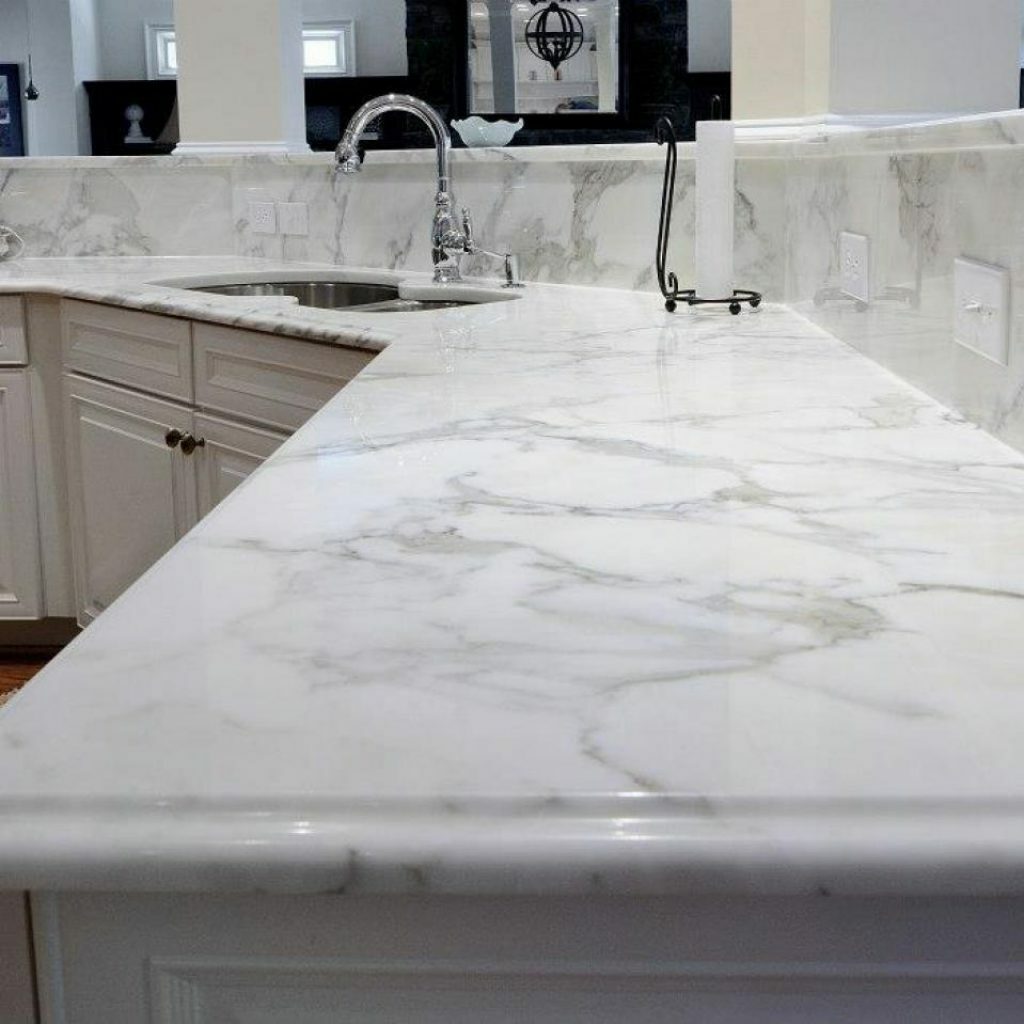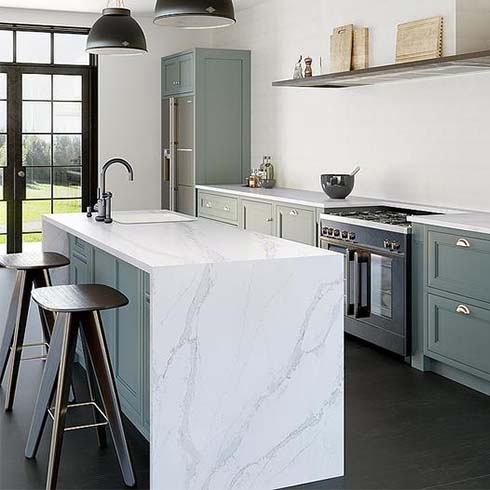Even if you’re not a culinary connoisseur, there’s no denying that preparing food is the heart of kitchen activity. In the first instalment of our series of Technical Guides, we’re focusing on the crucial role of worktops in the cooking process, examining the key factors to consider for this central kitchen function.

Hobs
The type of heat source you can use in your kitchen largely depends on the utilities available at your property. Both gas and electric hobs are compatible with quartz, natural stone, or sintered stone worktops.
In most cases, installing a hob requires just an unpolished cut-out in the worktop. For a sleek, integrated look, opt for a hob designed to be recessed into the worktop, creating a seamless finish. If you’re considering 20mm worktops, it’s crucial to verify the compatibility of your chosen hob, especially if there are drawers or an oven installed directly below the hob area.
Heatproof vs Heat Resistant
While all stone surfaces offer a degree of fire protection, there are nuances in their performance when it comes to kitchen heat.
Granite, having been formed in the intense heat of the earth’s core, is generally impervious to damage from the heat of pots and pans. Quartz countertops are heat resistant, but they require careful handling, as excessive heat exposure can lead to damage, particularly scorching of the resin component.
A common characteristic of all stone surfaces is their ability to remain cool to the touch. However, thermal shock remains a concern. This occurs when extremely hot items, such as pans or casseroles fresh from the oven, are placed directly onto the countertop, potentially causing breaks or cracks. Therefore, the widespread industry advice is to use coasters, hot pads, or trivets to protect these surfaces from direct heat contact, ensuring the longevity and integrity of your stone worktops.
Agars
Choosing a stone worktop around Agas and other free-standing cookers is a wise decision, particularly when compared to wood, which can dry out and warp under constant heat.
During the templating process, it’s crucial for these cookers to be properly positioned and levelled. This ensures that the worktops can be crafted to fit snugly and neatly on all sides, providing a seamless finish.
In period homes, it’s common to find range cookers set within the recess of what used to be a fireplace. In both renovations and new builds, constructing a mantle around the range cooker not only creates an attractive focal point but also offers the potential for additional hidden storage.
Should upstands be needed around the base of the cooker, they must be fully installed and completed before the templating process begins. This step is essential to guarantee an accurate and tailored fit for your stone worktops, seamlessly blending functionality with aesthetic appeal.
Extraction
It’s likely that your kitchen setup includes some kind of ventilation system to remove smoke, heat, steam, grease, and fumes. These systems vary in design: some are made to be visible as a feature in the kitchen, others are discreetly tucked away within cabinets, and there are those which are integrated directly into the hob itself.
Similar to the installation process for hobs, a separate downdraft extractor will need its specific unpolished cut-out. It’s important that this extractor is present on-site, but not yet installed, when templating takes place. For overhead extractors or cooker hoods, particularly if you’re planning to measure for a splashback or wall cladding, they should be fully installed before the templating process. This ensures accuracy in measurements and a perfect fit for your kitchen’s specific requirements and design.

Rowe Granite Kitchen Worktops
Rowe Granite have over 30 years of experience in supplying and installing high quality Kitchen Worktops around the UK.
Contact one of our helpful staff now for your free no-obligation quote.
Granite Worktops London – Quartz Worktops Doncaster – Quartz Worktops Harrogate – Granite Worktops Hull
